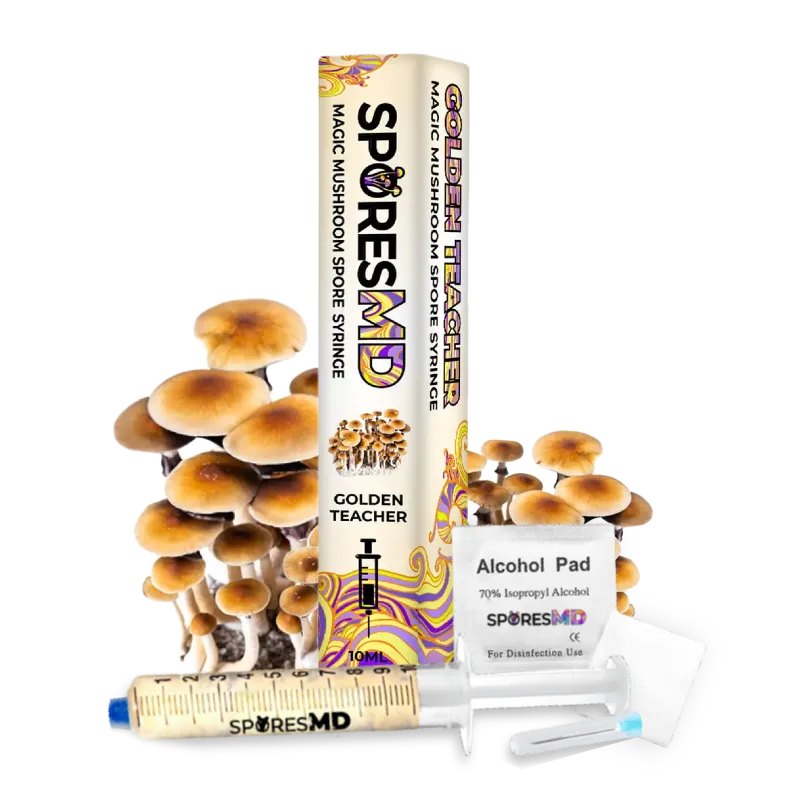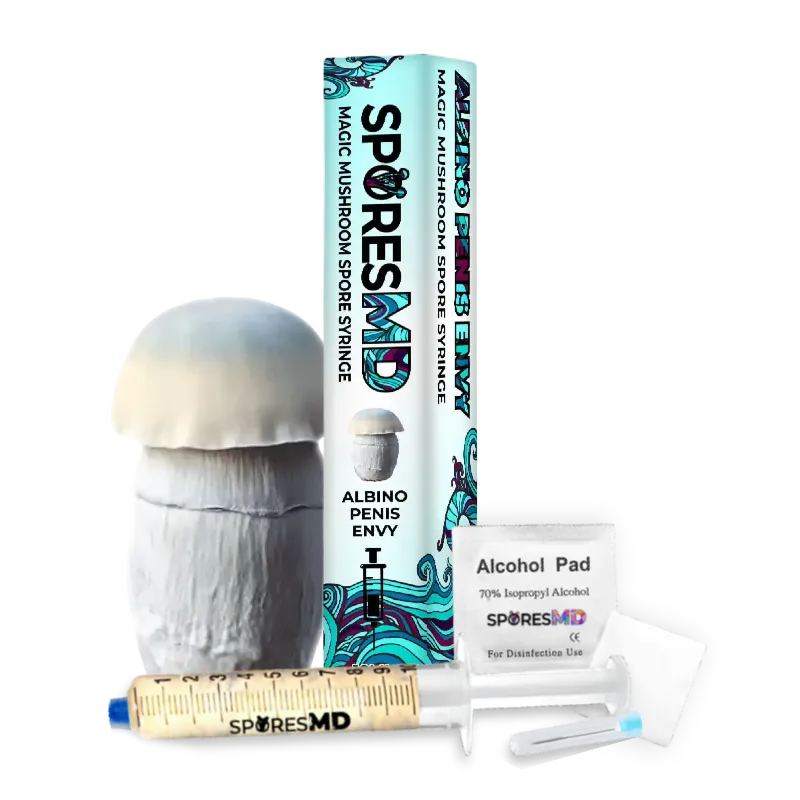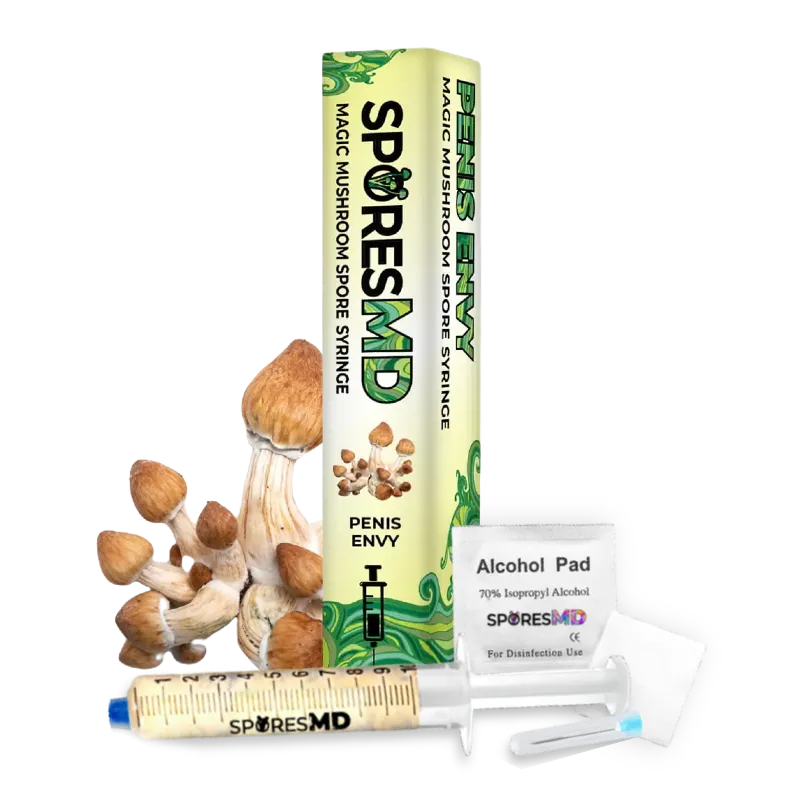So, you’ve got a spore syringe. It’s a commonly used medium packed with millions of psilocybe spores floating in a sterile solution. Whether you’re working with oyster mushrooms, medicinal strains, or the more whimsical magic mushrooms, this tool is your first step in the cultivation process.
Using a spore syringe is refreshingly simple. It’s used to inoculate substrate, a nutritious environment where your chosen mushroom strain will grow. But remember, the first thing to do is ensure a clean environment. Sterilize your hands or use gloves, because even the tiniest disruption can affect the delicate spores.
Each spore print is unique, fragile, and beautiful. Treat it with care, as even a slight airflow can smudge the pattern. Now that you’re equipped with your spore syringe, let’s dive into the world of mushroom cultivation.
Key Takeaways
- Mushroom spore syringes play a crucial role in mushroom cultivation for various strains, including oyster and medicinal mushrooms. They help in inoculating the substrate, which is the growing medium.
- Mushroom spores, which are small units of reproduction, can thrive even in less favourable environments, owing to the traits they acquire from different parent fungi. However, not all spores will germinate.
- When preparing the spore syringe, ensure a sterilised environment to avoid potential contamination. This involves sterilising the needle, scraping off spores from the spore print into sterilised glass, and mixing them with sterilised water.
- Even distribution of the spores within the syringe is crucial for successful inoculation. Inject around three milliliters of spore solution to colonize one pound of substrate, and remember to maintain sterility throughout the process.
- Caring for mushroom spores involves identifying the right mature mushroom, gently removing the stem and skirt from the mushroom cap, and collecting the spores. Keeping the cultivation space dark is also important.
- The process of mushroom cultivation is as rewarding as the yield itself, consolidating knowledge, care, and precision. Understanding various stages like spore germination, mycelium formation, and fruiting alongside environmental conditions is important for successful cultivation.
Understanding Mushroom Spores
When appreciating the world of fungi, it’s crucial to comprehend mushroom spores. These minute units of reproduction are the lifeblood of mushroom growth and propagation. Armed with a healthy helping of resilience, mushroom spores can thrive in less favorable environments, thanks to traits they acquire from different parent fungi.
While a single mushroom can release billions of spores, not all will germinate. Only those that land in a spot with decaying organic material stand a chance. These hardy adventurers then lie dormant, waiting for suitable conditions to germinate and potentially give life to new mycelium. They seize the moment, produce a hypha that’s threadlike and mate with an opposite type of hypha to start the cycle anew.
To grow mushrooms, you can utilize psilocybin spores harvested at home or bought from reliable sources such as Spores MD. Don’t forget to catch up on when and how to best use these spores in the comprehensive Spores MD guide.
Wondering about safety? Generally, mushroom spores won’t harm you. Even those that sneak into the veggies on your plate will simply pass through your system. But careful handling is key, as you wouldn’t want to jeopardize your mushroom cultivation efforts with unnecessary contamination.
It’s a rewarding journey, growing your mushrooms from spores. Whether you’re aiming for shiitake, button, oyster, or Pleurotus Ostreatus, these methods apply across the board. Why not dive into more granular details of the mushroom life cycle?
Preparing for Inoculation
Are you ready to take the next step in your mushroom cultivation journey? Now, it’s time to prepare your spore syringe for inoculating your growing medium. Do remember, maintaining sterility is key at every step to prevent contamination and ensure healthy mycelium growth.
To create a spore syringe, you’ll need to work in a sterilised environment. Prepare distilled water which has been boiled two or three times. It eliminates any bacteria that might’ve been lurking. A sterile syringe is next on the list. The needle can be sterilised by holding it in a flame until it glows red hot.
Gather some cooled sterilised water into your syringe. Using the needle, you’ll lightly scrape the spores from your spore print into a sterilised glass. Add the sterilised water from the syringe into the glass, then draw back the resultant spore water. At this stage, you might notice a slight discoloration or floating clusters of spores in the water. Your spore syringe is now ready!
| Steps | Task |
|---|---|
| 1 | Sterilise the work environment |
| 2 | Prepare distilled water |
| 3 | Sterilise the syringe needle |
| 4 | Scoop in some cooled sterilised water with the syringe |
| 5 | Scrape off spores into a sterilised glass |
| 6 | Draw up the spore-laden water back into the syringe |
Here’s a pro tip: to ensure even distribution of the spores within the syringe, give it a gentle shake if they settle at the bottom. Once this is done, cap it with its protective cover. You can now store your filled spore syringe in a cool, dark place until you’re ready to use it.
For optimum cleanliness, if you’re injecting into a bag, you might want to put a self-healing port on the bag. This could be achieved using an RTV gasket maker or pre-made mushroom grow bags with self-healing injection ports.
Remember, this step is simply the beginning of the next adventure in your mushroom cultivation journey. By meticulously preparing your spore syringe, you’re setting the stage for a fruitful yield and diving deeper into the fascinating world of mushrooms. To continue learning, check out more articles discussing when to plant mushroom spores and how to use mushroom spores.
Inoculating the Substrate
After you’ve successfully prepared your mushroom spore syringe, it’s time to inoculate your substrate. Remember, this crucial step can make or break your mushroom cultivation journey.
Spore syringes house millions of spores from your mushroom strain of choice. They float in a sterile solution, making it a perfect carrier for your spore inoculation regardless of the mushroom strain you’re working on. Be it oyster mushrooms, medicinal strains, or psilocybin spores.
To successfully inoculate your substrate, your environment needs to be squeaky clean. Disinfecting your hands or using sterilized gloves is recommended before handling your mushroom spore syringe. Sterility is of utmost importance to prevent unwanted contamination and ensure robust mycelial growth.
With your sterilized environment and spore syringe, you’re only going to need to drop 3 milliliters of spore solution to colonize 1 pound of substrate. This ensures an even distribution of spores throughout your growing medium.
Before moving on to the next stages of mushroom cultivation such as creating your substrate micro environment and the incubation and fruiting stages, ensure your substrate has been properly inoculated.
Optimizing the inoculation process streamlines the mushroom cultivation cycle, positively impacting your overall harvest. Whether you’re a seasoned grower or just starting with spores, the importance of precise inoculation can’t be overstated.
You’ve got the knowledge, and the power is now in your hands to cultivate your mushroom strains successfully. It’s a rewarding experience that encourages learning and growth.
Caring for Mushroom Spores
Diving deep into the mushroom cultivation journey requires understanding the importance of “caring for mushroom spores”. Each spore print is unique, beautiful and quite fragile. This calls for a very cautious approach while preparing your spore prints, as even the smallest airflow can smudge patterns and hinder the cultivation progression.
Your step-by-step guide to ensuring proper care of spores begins here.
Identifying the Right Mushroom
You start the process by identifying the right mushroom. It’s essential to choose a mature mushroom as not all mushrooms release spores easily. An opening of the cap indicates that it’s ready to release its spores.
Removing the Stem and Skirt
Taking the right steps to ensure a successful spore print is crucial. A sharp knife comes in handy when gently cutting the stem from the mushroom cap. A gentle removal is required for those mushrooms with a skirt, a thin tissue layer connecting the stem to the cap’s edge to fully expose the gills for optimal spore release.
Collecting Spore
Your next step is placing the mushroom cap with gills or pores facing down. Covering the cap with a bowl, to prevent drafts and contaminants, is the next logical step. Let the mushroom sit overnight which allows it to release spores, subsequently creatng a spore print on your slide or paper.
Stepping into any form of cultivation is exciting. With mushroom spores, it’s a unique journey, each differing in colors, shapes and sizes. It’s a rewarding journey of learning and growth, one that definitely calls for absolute precision and care. Remember, the mushrooms you’ll be growing prefer a dark environment, making it crucial to consider your cultivation space.
Don’t forget to check out our step-by-step guide on when and how to plant mushroom spores.
With proper care, your journey in mushroom cultivation will bring you a successful harvest. Irrespective of the species, success largely relies on how well you care for your mushroom spores.
Exploring Mushroom Cultivation
In the art of mushroom cultivation, the fun lies in the journey just as much as in the destination. From gathering mushroom spores to observing the mycelium spread, it’s a process teeming with wonder and experience.
Mushrooms are among nature’s most resilient warriors. Over 10,000 known species reside on our planet, each bringing to the stage their unique characteristics. Some flaunt alluring colors and shapes, others lend tantalizing tastes to our dishes, while a few possess qualities with potential health benefits.
In your quest to cultivate mushrooms, remember that knowledge, care, and precision are your three leading companions. From understanding mushroom stages – spore germination, mycelium formation, and fruiting – to knowing the impact of environmental conditions, your learning curve is as important as your cultivation efforts.
Undertaking this journey isn’t merely about yielding a fresh, homegrown mushroom harvest. It’s also about fostering respect and appreciation for the complex, intricate processes that nature effortlessly ushers.
In a controlled environment, mushrooms offer you a second chance to begin this incredible journey. With patience and precision, you can collect spores using the spore print left on paper as a marker, scraping them off to kick-start this fascinating process anew!
Whether you’re an amateur exploring psilocybin spores, or a seasoned enthusiast eyeing a fresh batch of oyster mushrooms, the process stays equally rewarding and illuminating.
As you delve deeper into mushroom cultivation, keep in mind the importance of adhering to ideal temperature conditions, maintaining optimal humidity, and using sterile water.
Conclusion
So, you’ve journeyed through the captivating realm of mushroom cultivation. From gathering spores to witnessing the fascinating growth of mycelium, you’ve seen how diverse and intricate this process can be. With over 10,000 species to choose from, your options are vast. Remember, success in mushroom cultivation hinges on your understanding of the stages and environmental impacts. It’s not just about the harvest, it’s about honoring nature’s complex processes. Whether you’re growing mushroom spores or oyster mushrooms, maintaining ideal conditions and using sterile water is key. So, go ahead. Collect those spores, embark on this rewarding experience, and watch as your mushrooms thrive.

![Master the Art of Mushroom Cultivation: A Comprehensive Guide on What to Do With Mushroom Spores [2024]](https://sporesmd.com/wp-content/uploads/2024/04/pexels-photo-191037.webp)



